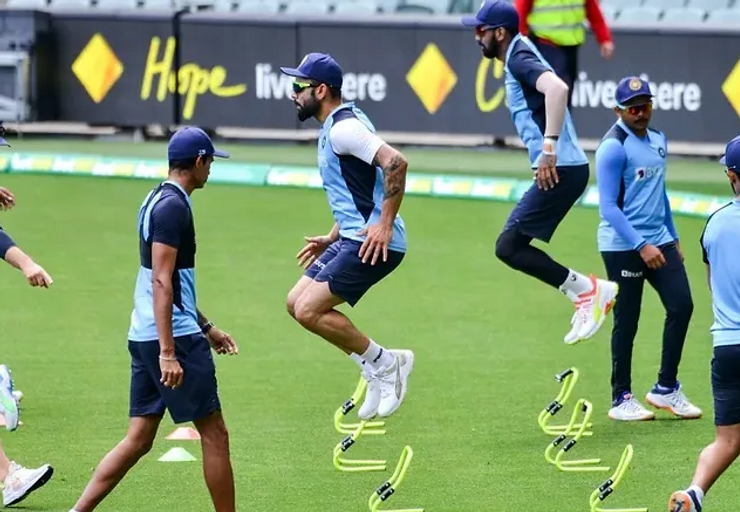Cricket Match Fitness Tips are essential for players who want to maintain peak performance on the field. Fitness is not just about strength; it involves endurance, agility, flexibility, and mental stamina. Modern cricket demands high-intensity movement, quick reflexes, and sustained focus over long durations, making proper fitness preparation crucial for every player.
These tips help players prevent injuries, enhance recovery, and improve overall game performance. From pre-season conditioning to in-season maintenance, understanding fitness strategies ensures cricketers are ready to perform at their best during matches.
Importance of Cardiovascular Fitness in Cricket
One of the most critical components of cricket match fitness tips is cardiovascular endurance. Cricket involves repeated sprints, quick changes of direction, and long periods of standing or fielding. A strong cardiovascular system ensures players maintain energy throughout matches without fatigue affecting performance.
Players can improve endurance through running drills, interval training, and cycling. These exercises enhance stamina, allowing bowlers to sustain speed and batsmen to maintain focus during long innings. Consistent cardiovascular conditioning is a cornerstone of match readiness.
Strength Training for Power and Injury Prevention
Strength is another vital element in cricket match fitness tips. Strong muscles support explosive movements, whether sprinting between wickets or delivering fast balls. Resistance training, bodyweight exercises, and functional workouts improve muscle tone, core stability, and joint strength.
For example, bowlers benefit from leg and shoulder strength, while batsmen require strong wrists, forearms, and back muscles for shot control. Incorporating targeted strength routines reduces injury risk, particularly in the knees, shoulders, and lower back, which are common problem areas for cricketers.
Flexibility and Mobility Drills
Flexibility and mobility exercises are often overlooked but are crucial in cricket match fitness tips. Stretching routines, yoga, and dynamic warm-ups help maintain joint range of motion and prevent muscle stiffness. Flexible muscles recover faster and handle the repetitive stress of bowling, batting, and fielding more effectively.
Players who integrate mobility drills into their daily routine experience improved coordination, balance, and agility. This allows for smoother movements, better fielding, and reduced risk of strains or sprains.
Nutrition and Hydration Strategies
Physical preparation alone is insufficient without proper nutrition and hydration. Cricket match fitness tips emphasize balanced diets that provide energy, repair muscles, and maintain focus. Proteins, complex carbohydrates, healthy fats, and micronutrients play a crucial role in overall fitness.
Hydration is equally critical. Dehydration reduces endurance, slows reaction time, and increases injury risk. Cricketers must maintain fluid balance before, during, and after matches to sustain peak performance.
Mental Fitness and Concentration
Modern cricket requires not only physical but also mental endurance. Concentration, decision-making, and stress management are part of effective cricket match fitness tips. Mindfulness exercises, visualization techniques, and routine practice under pressure conditions improve focus and resilience.
Players who maintain mental fitness handle high-pressure situations better, make quicker strategic decisions, and stay composed during crucial moments, giving them a competitive advantage on the field.
Pre-Match Warm-Up and Recovery Routines
Proper warm-up and recovery routines are fundamental in cricket match fitness tips. Dynamic stretches, mobility exercises, and light drills before matches prepare muscles and joints for high-intensity activity. Post-match recovery, including cool-down routines, stretching, and massage, reduces muscle soreness and aids faster recuperation.
These routines help maintain consistent performance levels across tournaments and prevent cumulative fatigue, which can affect both individual and team outcomes.
Technology and Fitness Monitoring
In modern cricket, fitness tracking technology is increasingly integrated into cricket match fitness tips. Wearable devices monitor heart rate, movement patterns, and workload, providing actionable insights. Coaches and players use this data to tailor training, manage fatigue, and optimize match preparation.
Tracking technology allows for personalized fitness programs, ensuring each player reaches peak condition while minimizing the risk of overtraining and injury.
Real-Life Examples of Professional Cricket Fitness
Professional cricketers consistently demonstrate the value of cricket match fitness tips. Elite players maintain rigorous strength and conditioning programs, combine them with strategic nutrition, and adopt mental resilience techniques. These practices enable them to deliver outstanding performances consistently, regardless of match intensity or duration.
Teams around the world now prioritize holistic fitness regimens, understanding that physical preparation directly correlates with on-field success and longevity in the sport.
Read also:
afghanistan national cricket team vs england cricket team match scorecard
england cricket team vs india national cricket team match scorecard
pakistan national cricket team vs australian men’s cricket team match scorecard
south africa national cricket team vs afghanistan national cricket team match scorecard
